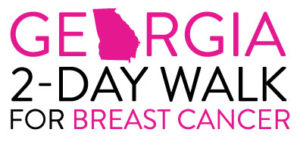Blisters: the most common foot problem the Medical Team treats during the walk.
They range from mild and uncomfortable to the extremely painful, which can ultimately prevent the completion of your 2-Day journey. Knowing the causes and preparing ahead of time will help you avoid getting the agonizing inhibitors! The main causes of blisters are:
Excessive sweating of the foot
Sweating causes the skin tissue to become super hydrated. The best prevention is to wear wicking socks. The socks draw the moisture from the foot and move it out of the shoe where is can be evaporated. These socks are available at a sporting goods store. We have noted a very marked decrease in the number of blisters and the severity of blisters in the last three years as the amount of walkers wearing these socks has increased.
Shoes that don’t fit
Wearing shoes too tight will cause irritation to the skin, which will then form a localized blister. Feet begin to swell if on them for prolonged periods. Some feet do swell more than others. For those who swell a lot, it would be helpful to have another pair of shoes that are a half size larger than what you usually wear.
Wearing shoes too loose will also cause irritation to the skin, with the constant motion in the shoe. The most common area for this for women is the back of the heel. Most women have a narrow heel. Even if the forefoot is comfortable, the heel may be too loose. There are shoes
that are better for this type of foot.
I tell patients there is no “best” shoe for everyone. Try on many different shoes to find the one that fits best. However, sometimes the best fitting shoe will not be able to solve the heel problem completely. Using silicone padding or moleskin, applied to the back of the heel, can make the heel fit better in the shoe.
Improper walking mechanics
Sometimes the foot will have a very slight twist as it propels the body forward. This can cause a blister under the ball of the foot. Moleskin and some powder will help to reduce the shearing force.
Toes that rub together will cause blisters – especially the little toe, if it curls under the fourth toe or if the fourth toe is under the third toe. Protecting these areas with moleskin will help prevent blistering.
What to do for blisters:
Do not ignore them – especially early on in the walk. They WILL get worse. Seek out medical personnel who will be there at every stop and at the end of the day.
Things to Remember –
1. Well fitted shoes
2. Wicking socks
3. Make use of the Medical Support Team!

